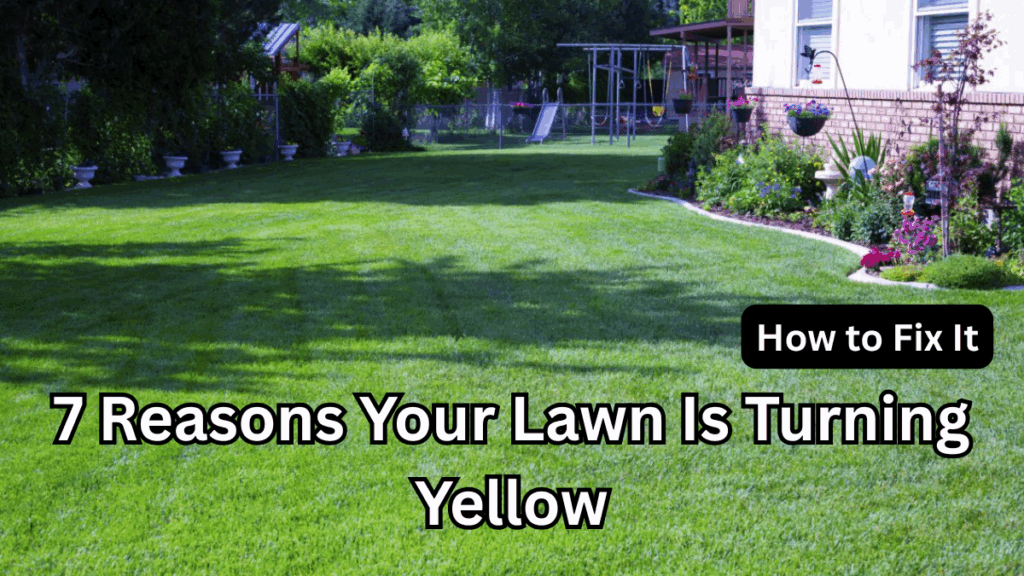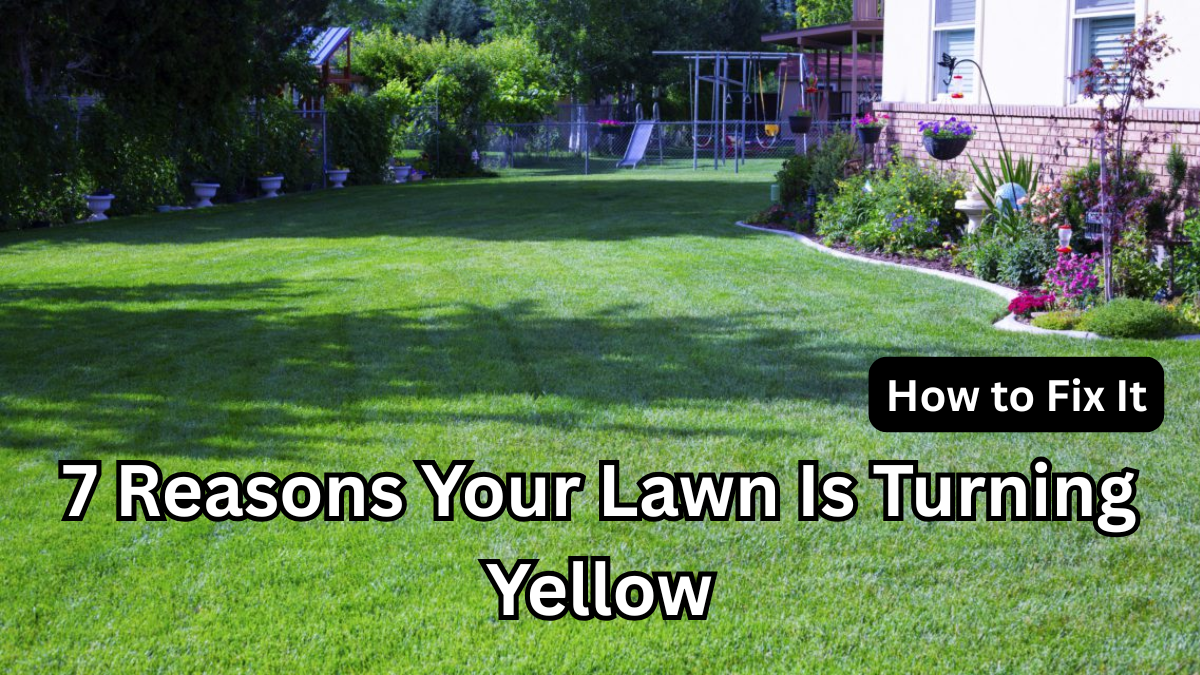A lush green lawn is the pride of any homeowner. But when patches of yellow start appearing, it can be frustrating and confusing. Lawn discoloration is often a sign that your grass is struggling. Understanding the yellow lawn causes is the first step toward restoring your yard to its healthy, vibrant state.
Here’s a breakdown of common reasons for yellowing grass and actionable solutions to fix them.

1. Overwatering or Poor Drainage
Too much water can suffocate the grass roots, leading to grass health issues like yellowing. On the other hand, poor drainage can trap water in certain areas, causing similar problems.
How to fix it:
-
Water deeply but less frequently (1–1.5 inches per week).
-
Aerate your lawn to improve drainage.
-
Check for compacted soil that prevents water absorption.
2. Underwatering
A lawn deprived of sufficient water will naturally lose its green hue. Grass blades may turn yellow or brown and appear dry.
How to fix it:
-
Water your lawn early in the morning to reduce evaporation.
-
Use a sprinkler system to ensure even watering.
-
Increase watering during hot, dry spells.
3. Nutrient Deficiency
Grass needs essential nutrients, especially nitrogen, to stay green. A lack of nitrogen is a major yellow lawn cause.
Solution:
-
Apply a balanced lawn fertilizer.
-
Conduct a soil test to check nutrient levels.
-
Use organic compost to enrich the soil naturally.
4. Pest Infestation
Grubs, chinch bugs, and other pests can damage roots, causing yellowing patches. Lawn pests often go unnoticed until the damage is severe.
Solution:
-
Inspect your lawn for pests regularly.
-
Use natural or chemical pest control solutions.
-
Keep your lawn healthy to resist infestations.
5. Fungal Disease
Fungal infections like rust or dollar spot often cause yellow spots. These diseases thrive in damp or humid conditions.
How to fix it:
-
Avoid watering late in the evening.
-
Apply fungicide when necessary.
-
Improve airflow by trimming surrounding plants.
6. Soil Compaction
Compacted soil restricts root growth and reduces nutrient uptake, leading to lawn discoloration.
Solution:
-
Aerate your lawn annually.
-
Avoid heavy foot traffic on wet grass.
-
Incorporate organic matter to loosen the soil.
7. Pet Damage
Urine from pets, especially dogs, contains high nitrogen levels that can burn grass, creating yellow or brown patches.
How to fix it:
-
Water the area immediately after your pet urinates.
-
Train pets to use designated areas.
-
Re-seed or patch damaged spots.
Quick Reference: Common Yellow Lawn Causes and Solutions
| Cause | Symptoms | Solution |
|---|---|---|
| Overwatering | Wet, spongy patches | Reduce frequency, improve drainage |
| Underwatering | Dry, yellowish blades | Water deeply in the morning |
| Nutrient Deficiency | General yellowing | Fertilize, add compost |
| Pest Infestation | Patchy yellow spots | Inspect, treat pests |
| Fungal Disease | Small yellow spots, spreading | Fungicide, adjust watering schedule |
| Soil Compaction | Thin, weak grass | Aerate, add organic matter |
| Pet Damage | Small yellow/brown patches | Water area, designate pet zones |
FAQs About Yellow Lawn Causes
1. Can over-fertilizing cause a yellow lawn?
Yes, applying too much fertilizer can burn grass roots, leading to yellowing. Always follow recommended amounts.
2. How long does it take for a yellow lawn to recover?
Recovery depends on the cause. With proper care, most lawns can return to green within 2–4 weeks.
3. Is it normal for a lawn to yellow in summer?
Some yellowing may occur due to heat stress, but consistent yellow patches usually indicate an underlying problem.
4. Can soil pH affect grass color?
Absolutely. Grass prefers slightly acidic to neutral soil. A pH imbalance can limit nutrient uptake, causing grass health issues.
Click here to learn more
